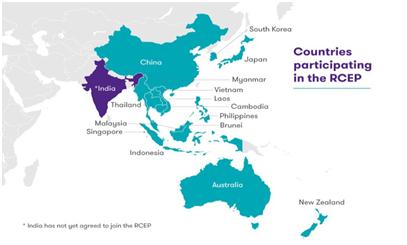In a latest development, 15 countries solidified their participation in the Regional Comprehensive Economic Partnership (RCEP). Even as India opted to stay out after walking out of discussions last year, the new trading bloc has made it clear that the door will remain open for India to return to the negotiating table.
What is RCEP?

RCEP has now been signed without India. The ramifications of India’s decision to opt out of RCEP will be tested. When India chose to stay out of the Belt and Road Initiative in 2017, there was much commentary that New Delhi might be isolating itself. Three years later, India’s position has been recognised by like-minded democracies, and many have said that India’s decision was prescient.
Verifying, please be patient.